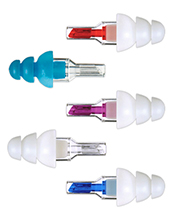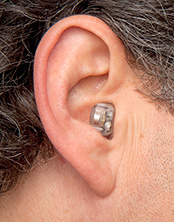Etymotic | Part Aid, Part Protection, Two Parts Makes You Feel Like a Bat/Dolphin/Echo-location Enabled Creature
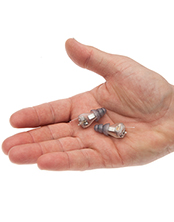 I can personally say I’m quite familiar with the work Etymotic Research has done with their line of ER20 high-fidelity Earplugs and consider these low profile plugs to be a nightlife staple. To my fellow audiophiles who frequent your fair share of festivals, shows, clubs, and concerts, I’m sure you can share in my spectrum of feelings towards the products that companies like Etymotic Research offer:
I can personally say I’m quite familiar with the work Etymotic Research has done with their line of ER20 high-fidelity Earplugs and consider these low profile plugs to be a nightlife staple. To my fellow audiophiles who frequent your fair share of festivals, shows, clubs, and concerts, I’m sure you can share in my spectrum of feelings towards the products that companies like Etymotic Research offer:
- Pain when you’re half-way through a set at the Palladium and you adventurously decide to step outside Etymotic’s comfortably dampened reduction point (20-dB) by removing your earplugs; then the cold realization that human ears were probably not meant to safely sustain the full brunt of basswaves powerful enough to shake concert venues and disrupt your breathing.
- Horror while you observe the youngish hipster sporting a sideways snapback and tanktop, speaker hugging the club venue’s subwoofers, eyes closed, with the grinning expression of a napping child who fell asleep eating a tub of ice cream.
- More horror while you observe the middle-aged hipster sporting a cashmere sweater and dress pants, speaker hugging the club venue’s subwoofers, eyes closed, with the grinning expression of a napping child who fell asleep eating a tub of ice cream.
- Appreciation in being able to still detect moving basslines, echo’ing synths & vocals, and subtle changes within mid tone chords and percussion lines. Doing so even in environments where music crosses the border between the auditory and somatosensory; when you can physically feel the sound hit your chest while you’re staring at the shaking liquid in your cup (thinking about Jurassic Park).
- Lamentation from misplacing yet another pair of these earplugs, victim to the dreaded washing machine as you wash that pair of beer soaked cargo shorts that you adore way too much. I’ve probably gone through about 5-6 pairs in the last 3 years. Luckily, Etymotic does suggest (for the daily users) to change your plugs out every 3-6 months due to loss of elasticity of the rubber eartip inserts.
As you might be able to detect, my background for music enjoyment and usage of Etymotic’s products draws heavily from experiences within the dance and electronic space. But realistically, this is where Etymotic’s high fidelity plugs have been the most useful (though using them for air travel is nice as well).
So imagine my bemused interest when we got the invitation to test out Etymotic ’s new line of Music Pro 915 high-fidelity adaptive noise-reduction earplugs. A lot to take in, but one more time: High-fidelity adaptive noise-reduction earplugs for Music professionals.
To shoot straight to the point, these technology packed earplugs are simply astonishing and unlike anything I’ve ever experienced. The active monitoring system provides feedback and decibel buffering (either 9-dB or 15-dB of protection) based off its detection of decibels and intensity of sounds in your surroundings. The dampening comes smoothly and gradually, and even provides instantaneous protection from loud sudden sounds (e.g., cymbal strikes or the shrill shrieking of boisterous friends who haven’t seen each other in years) as well as maintaining an almost open sound feed when little to no background sound is detected.
The earplugs run on two separate zinc batteries and feature two modes of operation: one for 15-dB of buffering and another for 9-dB. Once again, the auditory experience of having active noise enhancement is something I’d never experienced before (though it’s similar to noise canceling headphones, it’s in all, a totally different experience).
One part hearing aid, one part hearing protection, two parts “makes you feel like a bat/dolphin/echo-location enabled creature”.
We tested the unit in a few settings, from quiet to obscene: a) At “home”, b) In a nightclub, c) At an STS9 concert at the Hollywood Palladium, a venue known for showing very little to no mercy for the hearing health of its patrons (but oh, does it hurt so good).
The “home” experience was the first and most interesting test scenario of the three. I put ‘home’ in quotations because my current living situation is anything but standard. The mixing and mashing of active and passive sounds into one jumbled white noise is a daily occurrence as I live in a high-ceiling converted factory space that sits right alongside the busy 5 freeway and against LA’s busiest train yard. When I placed the earplugs in and flipped them to the 15-dB setting, it felt a bit similar to the dampening that happens on the standard high-fidelity 20-dB blue plugs.
We even tried our hand at a few rounds of Marco Polo
However, things got interesting once I flipped to the 9-dB setting. Once on, the active monitoring and (what I understand to be) a white noise counterfeed steadily buzzed in my ear. It wasn’t quite the same as the familiar BOSE noise-cancellers, but came more as a hollow wind noise (think placing a seashell to your ear). Immediately I tested the plugs by snapping my fingers aggressively. The result was a muffling effect that made my fingers sound miniscule and positioned extremely far away, with gradual balancing as I continued snapping & moving my arm further away. Sweet.
Next was my observance of the ability to hold a conversation with my roommate from across the loft at ~50 paces away. We further experimented with this by having him slowly increase his distance while maintaining a conversational speech volume level. At almost 150 paces away, I was still able to make out what they were saying with little to no effort, almost as if they hadn’t even moved away. While his comments and subject matter were less than savory and quite possibly caused some deep scarring, the effect was simply astonishing.
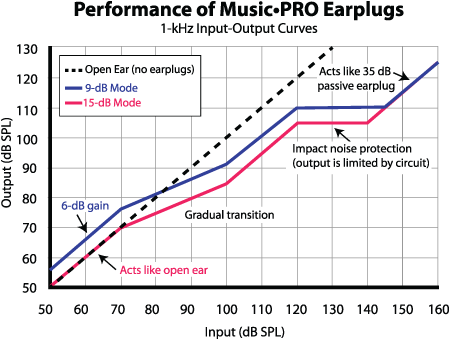
And with that, I realized the where the true value and potential for these electronic earplugs came into play. Perhaps not in the MOST technical way to describe this experience, but what the adaptive sound matching provides is a flat and equal sound-plane for all encompassing noise. Overly noisy wavelengths and levels are brought down and quiet ones boosted up, along with careful protection for potentially damaging sound, (I moved my face as close as possible to our home audio system whose highest bass and volume settings have angered many a neighbor).
I could only imagine the implications of a teacher or professor use the MP915’s during lecture. Never agin, will snide remarks and snarky comments go unheard.
Immediately, my mind breezed through to my periods of classical music training (i.e, the lost Saturday mornings of my childhood, spent being chastised by a strict Russian piano teacher), and the slightly awkward, but fond years of my high school youth in marching band & symphony geekdom.
And THAT is where these earplugs would come into play best, for orchestral directors, performers, musical aficionados, and other professionals who need to maintain a clear monitoring environment, clarity of vocal communication in a loud setting, and quality hearing protection. I could only imagine how useful these earplugs would be for the conductor who needs to detect the subtle moving line of a French Horn accompaniment, to signal their musician accordingly, an on-stage DJ, playing one of their favorite tracks, cranking up the high’s to isolate a particularly moving vocal loop.
The experiences at the nightclub and STS9 concert had their own interesting points, but didn’t come so much as a surprise as the initial home-trial. With the nightclub’s blaring music and the voices of a few thousand inebriated patrons, the MP915’s proved to be a bit overwhelming in the 9-dB mode (it almost seemed like TOO much sound was being put through and I was getting sound enhancement on things that probably didn’t need assistance. For this particular environment, flipping it to the 15-dB made things more bearable and actually drowned out some of the annoying banter.
I know you love this song, I’ve heard you say that three times already.
The STS9 show on the other hand, well, to accurately describe this experience, you have to understand a little bit about the psychedelic electronic rock band from Santa Cruz. They are, quite simply, an AMAZING act for music fans that enjoy cross-genre music and live instrumentation. Think jazz, jam-band, funk, and rock, all rolled into a danceable package and blasted into outerspace. Okay, enough with the silliness.
STS9’s live band set up lent extremely well to the Music Pro 915’s capabilities. Though the volume of the Palladium was just like the nightclub, a bit overwhelming for the 9-dB setting (felt like too much sound was coming in and not quite enough deadening to avoid discomfort), a quick setting change on the ear plugs to 15-dB along with the nature of their music proved to be a great combination. Unlike the nightclub setting (with the additional chatter of thousands), the 915’s felt right at home amongst a concert where most of the attendees were in silent awe of the on-stage happenings.
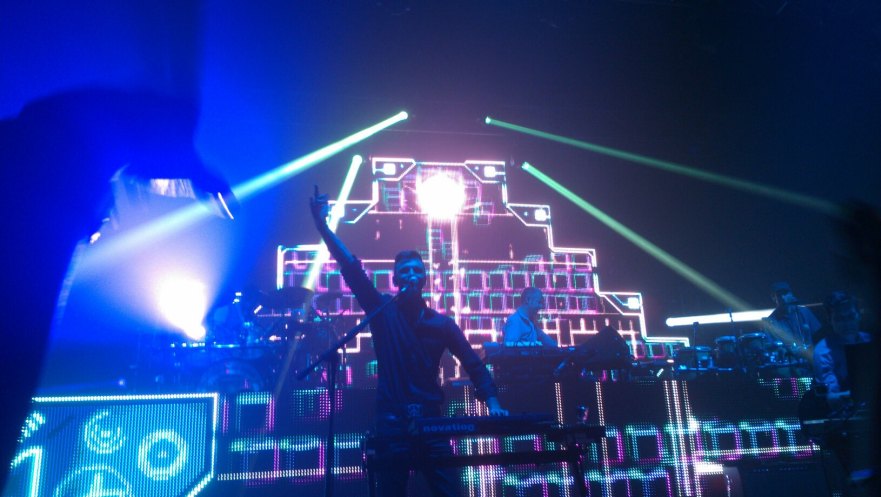
Photo from musicyouneed.net
The 915’s ended up enabling the extra ability to really pick out subtler cues and auditory bits that now held equal weight to front and center guitar leads and chordal melodies (I probably spent the entirety of their 2 hour show in awe of their line-percussionist while he knocked out short staccato wood block melodies). Overall, the earplugs were able to add depth to an already stellar musical act with deeper layering and textures. The added complexity was fantastic, but I did feel the best place to use them was towards the back of the crowd and not right in front of the behemoth sound system of the Palladium.
So who would find the most value out of using these?
At the end of the day though, with an MSRP price of $399.00, the Music Pro 915’s realistically won’t be an option for most casual music fans and concert goers; but for performers, conductors, technicians, educators, and others who require more attention to detail than the standard CVS-issue foam plugs, these may be just the thing to add an extra dimension to their auditory experience as audio professionals, all while protecting their ears at the same time.
Regardless of your budget or usage ($13 ER20’s vs $400 MP915’s), I cannot stress enough just how important it is for frequent concert goers to purchase a pair of high quality noise reduction ear plugs. Like any activity that borders the thin line between enjoyable and damaging (say, alcohol consumption), I find it all too common and ridiculous for some (my close friends included) to giddily proclaim the following day just how much abuse their ears suffered, #humblebragging about how their current ringing discomfort directly translates into just how fantastic and epic their evening was. Personally, I intend to age into my old cashmere hipster years frequenting shows and doing my own periodic speaker hugging along the way… but comfortably and safely.
Next time, visiting a full symphony with the 915’s is an absolute MUST!
For more information on the Etymotic Research Music Pro’s, please click here!
A quote from Mike Baird (former drummer for Bob Dylan, Michael Jackson, Celine Dion & Stevie Wonder):








